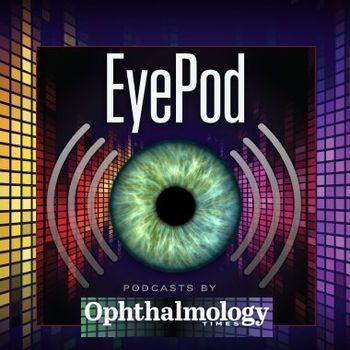
Protecting vision during the 2024 solar eclipse
Viewing the solar eclipse without proper eye protection can pose hazards, and ophthalmologists can educate patients about the importance of using certified solar viewing glasses or other safe viewing methods.
Millions of Americans will find themselves in the path of a total solar eclipse on April 8, 2024, and eyes will look up to the skies, but a few moments of unprotected viewing could leave viewers with a lifetime of eye issues.
The entire country will get at least a glimpse of a partial eclipse, while the path of totality will cross 15 states, including parts of Texas, Oklahoma, Arkansas, Missouri, Illinois, Kentucky, Indiana, Ohio, Pennsylvania, New York, Vermont, New Hampshire and Maine, as well as smaller parts of Michigan and Tennessee.
Viewing the solar eclipse without proper eye protection can pose hazards, and ophthalmologists can educate patients about the importance of using certified solar viewing glasses or other safe viewing methods.
Erin Carlson is a clinical professor in the College of Nursing and Health Innovation at the University of TexasArlington (UTA), where she is the founding director of graduate public health programs.1
“Researchers have found that public health education is effective at reducing visual morbidity during an eclipse,” Carlson said. “We know that education and having the right eyewear, the right solar filter, is really important.”
According to the American Astronomical Society, the sun is about half a million times brighter than the full moon. It also gives off and infrared radiation that can be harmful to patients’ eyes. When the sun becomes partially obscured, it can be easier for people to look directly at it. As the moon passes in front of the sun and light dims, the pupils of the eye dilate to allow more light in, increasing the potential for damage to the retina.
“There is no safe dose of direct sunlight to your eyes, really, under any circumstances,” Andrew Reynolds, MD, a clinical associate professor with the Department of Ophthalmology at the Ross Eye Institute, University at Buffalo Jacobs School of Medicine, told Spectrum News.2
Jeff Todd, president and CEO of Prevent Blindness, pointed out that during the last total eclipse in 2017, 215 million adults watched the event, 72% of people used eclipse glasses due to short supply.
“We are out to change that for these eclipses by advocating that 100% of viewers wear eye protection to view these awe-inspiring natural phenomena,” he said.
The damage doesn’t occur instantaneously. The sun, however, has a lot of light. Focusing all of it onto the retina can cause photoreceptors to absorb high amounts of energy, damaging or killing them.2
"Basically, you're killing the photoreceptors from within," Dimitrios Karamichos, executive director of the North Texas Eye Research Institute at the University of North Texas Health Science Center, told Phys.org.3
The damage ranges from small spots in your vision that can make everyday tasks difficult, to blindness, and it happens faster if you’re using unsafe magnification.
Jon Carmichael, an astrophotographer and keynote speaker, told Ophthalmology Times that smartphones, cameras and telescopes pose added risk.
“Smartphones, telescopes and binoculars can be particularly dangerous,” he said. “They collect more light and funnel it towards the retina.”
Carmichael said filters can be used to protect your phone or camera, and eclipse glasses also can protect equipment.
“There is an international standard for eclipse classes, and that standard is 012312-2," said Reynolds. "I would buy them early, and the other point I would make is I would buy them from a reputable source.”
If people are adequately prepared, they can enjoy the eclipse without fear of eye damage.
“This is, you could say, once in a lifetime potentially for people. These are very rare occurrences that, since the dawn of time, have enthralled people," Reynolds told Spectrum. “And eye doctors are just like that, I'm going to watch the clips myself, for sure. I'm just going to make sure I do it with the proper safety glasses.”
Eclipse glasses do not expire, but if a patient believes their glasses might be damaged, they should get a new pair. Many organizations are giving them out for free ahead of the event.
Safety is key, and Kimberly Breuer, associate professor of instruction in history who specializes in the history of science and technology and whose current research focuses on UTA’s celestial map collection, said it is a once-in-a-lifetime event.1
“People have been watching the solar eclipses from time in memoriam, so stop and think about how you are part of this human history,” Breuer said in a UTA news release. ”You are viewing something that people thousands of years ago looked at, and people thousands of years from now are going to do the same thing.”
References:
Stargazers gravitate to Planetarium for solar eclipse talk. EurekAlert! Accessed February 27, 2024. https://www.eurekalert.org/news-releases/1035171
Experts offer tips on keeping your eyes safe during the April eclipse. spectrumlocalnews.com. Accessed February 22, 2024. https://spectrumlocalnews.com/nys/central-ny/health/2024/01/18/experts-offer-tips-on-keeping-your-eyes-safe-during-the-april-eclipse
Ramakrishnan A, News TDM. Why you shouldn’t look at a solar eclipse without eye protection. phys.org. Accessed February 22, 2024.
Newsletter
Don’t miss out—get Ophthalmology Times updates on the latest clinical advancements and expert interviews, straight to your inbox.













































